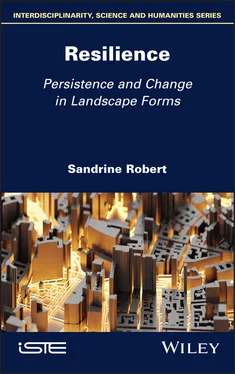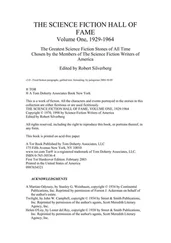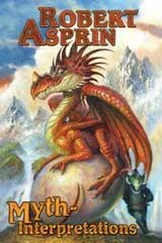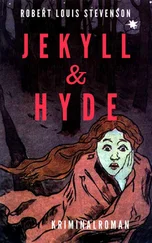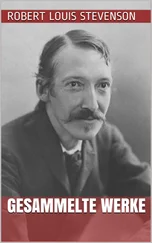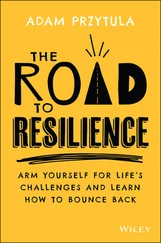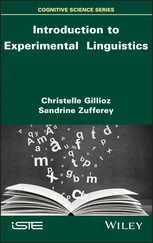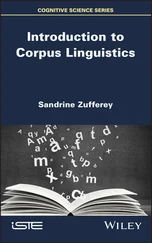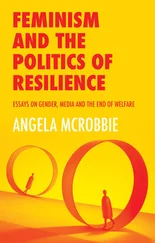1.1.2. Looking to the present to uncover the past: regressive history
In countries bearing fewer marks of Roman occupation, many researchers focused on medieval agrarian landscape structures. In 1895, August Meitzen, a professor of statistics and economics at the University of Berlin, posited that a type of land division that he had observed on cadastral plans was, in fact, the imprint of legal land plots established in late antiquity and the early Middle Ages (Meitzen 1895). Meitzen’s analytical method was widely disseminated, and historians began to pay increasing attention to cadastral plans as source materials. Inspired by Meitzen’s work, F.W. Maitland (1850–1906), professor of law at the University of Cambridge, began to study the origin of the grouped villages in the open field system and the dispersal of the English bocage. He stated: “Two little fragments of the original one-inch ordnance map will be more eloquent than would be many paragraphs of written discourse” (Maitland 1987, p. 16). Maitland’s work gave rise to a new tradition of research in historical topography in Great Britain, first based on map analysis, and later on aerial photography (Darby and Williams 2002, p.18).
In France, the historian Marc Bloch (1886–1944), familiar with the work then coming out of Germany and Great Britain, formalized the “inverse method” in 1931. Bloch’s approach consisted of “reading history backwards” from texts and cartographic representations produced during the 18th century, a period in which landscapes and agrarian practices began to be better documented (Bloch 1988, p. 49). According to the historian Adriaan Verhulst, the regressive method consists of:
[Beginning with] the least unknown, which is usually also the most recent or closest to us, such as the present landscape or the nineteenth-century cadastral plan, in order to travel backwards into the past by means of clues which become increasingly difficult to interpret the further back we go, but which occur in a clear historical sequence. (Verhulst 1995, p. 20) 2
Recent documentation is used for reasons of simple necessity, where no historical equivalent exists for the period in question. For urban historians, planimetric documents are the only practical source for obtaining ancient city plans, since it is impossible to excavate a whole town or city. For Marcel Poëte, one of the fathers of urban morphology in France (alongside Pierre Lavedan) 3 , there are clear and significant “medieval legacies” in the current layouts of major cities (Poëte 1924, p. 7). Ordnance maps, cadastral documents and modern plans are thus “perfectly acceptable” source documents for the study of medieval cities, and even for the ancient period (Lavedan 1926a, p. 94). Lavedan generalized these into “a principle, which, if not universal and absolute […], is at least applicable to the majority of cases: the rule of persistence of the plan ” 4 , which he described in detail in Qu’est-ce que l’urbanisme ? in 1926: “Any city, left to itself, will retain the plan on which it was built. This persistence is only disturbed by local interventions, made known to us by history” (Lavedan 1926a, p. 91). In 1966, the architect Aldo Rossi, speaking of “Poëte and Lavedan’s theory of permanence ”, stated: “This last point is Poëte’s most important discovery. Cities tend to remain on their axes of development, maintaining the position of their original layout…” (Rossi 1984, p. 59).
On the cusp of the 19th and 20th centuries, the idea that traces of the past survive in the present had thus expanded beyond the point of simply observing ruins and monuments still present in the landscape, to the consideration of broader spatial structures. Several authors used the notion of the “palimpsest” to communicate the idea of temporal collisions, originally in the sense of an accumulation of forms from different periods. This metaphor has proved remarkably durable, used over several decades, with variations in meaning reflecting changes in the way in which we understand the notion of time in a landscape.
1.1.3. The palimpsest as accumulation
The term “palimpsest” was used from ancient times to denote a tablet or sheet of parchment, which was scraped to remove earlier text prior to reuse. From the Renaissance on, chemical techniques were used to read the undertext of palimpsest manuscripts; these techniques became increasingly sophisticated, reaching their height in the 18th century (Larousse 1898, p. 628; Gaffiot 1981, p. 1105). The metaphor began to be applied to landscape in the 19th century; the first recorded instance is found in the work of F.W. Maitland (Lucas 2012), who studied dispersed habitat of presumably Celtic origins “from the ordnance map (that marvellous palimpsest, which under Dr Meitzen’s guidance we are beginning to decipher)” (Maitland 1987, pp. 15–16). Maitland belonged to a school of thought in which landscape was compared to text, and elements in a landscape were analyzed using semiological techniques. In 1934, the historian H.J. Randall again used the palimpsest metaphor, indicating that elements in a landscape should be seen as signs, and that their assembly constitutes a historical document in the same way as written documents. For Randall, maps provided a record of history, inscribed into the landscape:
The face of the country is the most important historical document that we possess. Upon the map of England – “that marvellous palimpsest” – is written much of English history: written in letters of earth and stone, of bank and ditch, of foliage and crop. As is the case with every map, the writing is not such as he that runs may read. It needs patience to discover, knowledge to decipher, insight, sometimes amounting to genius, to interpret. But the writing is there, all else awaits the competence of the reader. (Randall 1934, p. 5)
For Maitland and Randall, this written past was not concealed or erased by more recent “writings”. Ancient forms are present in the current landscape, and can be accessed by anyone who knows how to read them. One must simply look for clues in the image, as in an Épinal print 5 , where the most important points are not necessarily the most obvious. The villages which Maitland studied, using maps, were still part of the contemporary landscape, but they had retained elements betraying their ancient origins: groupings of elements, road layouts, housing patterns etc., which “never have been thoroughly effaced” (Maitland 1987, p. 15).
Carl Sauer (1889–1975), a contemporary of Maitland, professor of geography at the University of Berkeley and one of the leading figures in the development of historical geography, further disseminated Meitzen’s work and promoted the idea of “a picture of the former cultural landscape concealed behind the present one”, which could be read by anyone with the right keys (Sauer and Leighly 1963, p. 367).
The idea of the palimpsest is helpful as a metaphor for understanding the coexistence of new and ancient forms in a landscape. The French geographer Paul Vidal de La Blache used the term in the sense of an accumulation:
Big industry has upset conditions in central and western Europe during the last century. A thousand years of history had made […] erasures on the record of population 6 [original: Ce peuplement s’offrait déjà comme un palimpseste sur lequel dix siècles d’histoire avaient inscrit bien des ratures ]. Draining of marshes and clearing of forests were continually adding new touches to the original background. […] But when the industrial age began, it gave birth to a whole new set of human establishments. And yet, the primitive core of the population can still be discovered. On positive evidence it can be stated that men, here as elsewhere, persisted in assembling in certain places rather than in others. (Vidal de La Blache 1926, pp. 61–62, our italics)
Читать дальше
